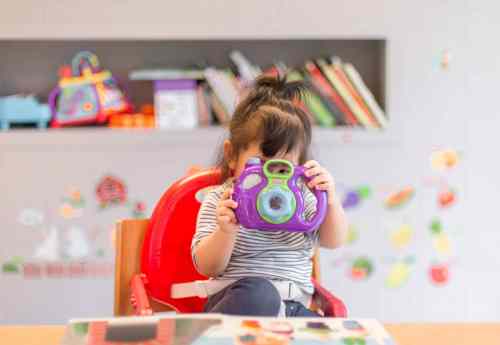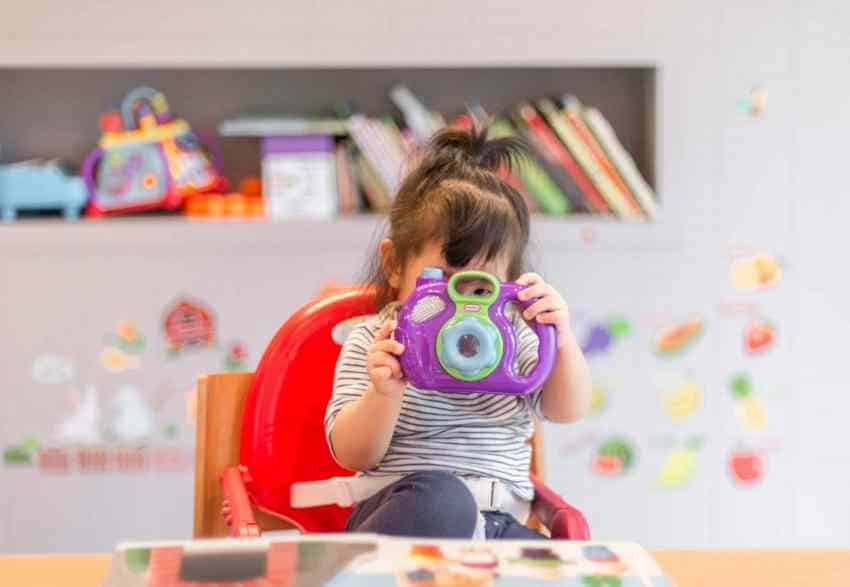Introducing your baby to solid foods is exciting but it can be difficult to know exactly how and when to get started. Below is a guide on how to introduce your baby to solid foods.

What Age Should You Start?
Your baby should be four months of age at the very least. Before this age the immature digestive system will find it difficult to cope with solid food. Most medical professionals, however, will advise waiting until your baby is at least six months of age, to reduce the risk of food allergies.
Your baby’s age is not the only consideration and there are other factors to take into account when determining whether or not the time is right for baby’s first foods.
Is Your Baby Ready?
Look for signs of readiness in your baby – does he watch you with interest when you eat, following the progress of your food from plate to mouth? This increased interest in solid food can indicate that he’s ready to try it for himself.
Does your baby seem dissatisfied after his usual milk feeds, or is he waking at night after previously sleeping through? Although these may be signs of an increase in his appetite, they can also be triggered by discomfort from teething. It is important to try to establish whether or not teething is the cause, to avoid introducing solid foods before your baby really needs them.
Your baby should have good head control and be able to sit well, as this makes swallowing easier. Younger babies may not be able to sit unsupported, however, so it is very important to provide the appropriate support if this is the case.
The decision to introduce solid foods to your baby must ultimately be made by you and your child’s doctor. You may feel pressured by other people, particularly the older generation to give solid foods to your baby earlier than medical advice recommends. It is important to remember that a great deal of research has been carried out in order to provide this advice and such information was not available in the past.
What is the best first food for a baby?
Baby rice, an easily digestible, single-grain cereal, is the ideal food to start with. It can be mixed with warmed breastmilk or baby formula, so its taste will be familiar to your baby. Initially, you can mix it to a fairly runny consistency that your baby will find easy to cope with, thickening the texture slightly with each subsequent feed. (Baby rice cereal can also be made at home by cooking and mashing rice with milk).
About a tablespoon of baby rice is the perfect amount to start with. Try giving this first solid feed around lunch time. So that your baby is not too hungry give him some of his usual milk feed before the baby rice. If he is too hungry, he will be frustrated and distressed.
Signs to look out for
He will respond well to supportive gestures and smiles, so stay relaxed and don’t worry if he pushes the food back out of his mouth! Most babies do this instinctively at first and this “tongue-thrust” reflex will subside as he becomes accustomed to the new and unusual textures he is experiencing.
If he does not seem interested, simply take the food away and try again the next day, or a few days later. You should not try to force him to eat, as this is traumatic for him and will only make things more difficult. After all, there is no rush – at this stage, breastmilk or formula is meeting all of his nutritional needs.
Once your baby is comfortably enjoying baby rice, then try introducing pureed, fresh vegetables. It is worth noting that some babies do not like baby rice at all and begin by eating vegetables straight away.
Introduce only one new vegetable at a time, leaving four days between each new food. This will help you identify any foods that cause an allergic reaction or trigger digestive problems in your baby.
Some good vegetables to introduce as baby’s first foods are spinach, sweet potato, carrots, white potatoes. Here you could find a plethora of suggestions for the healthiest vegetables.These vegetables can be boiled or steamed and then pureed. Sweet potatoes can be baked in their skins, then the soft flesh scooped out, ready to serve; instant, healthy baby food!
Variety of Food
You can try combining different vegetables for some delicious new flavors – carrots and spinach. The possibilities are endless! Introduce each new food one at a time to be sure you are able to note any reactions.
Once your baby is enjoying vegetables, you can add fruits to the menu. Good choices include pureed banana, avocado and cooked, pureed apples and pears. Citrus fruits should be avoided for the first year, as they can trigger allergic reactions.
For something really different, try combining fruits and vegetables. This could include combinations such as apples with carrots, or bananas with sweet potato, apple with mashed rice.
Follow your baby’s lead and increase the amount and frequency of his meals as his appetite dictates. Always watch carefully for any signs of allergic reactions and discuss any concerns with a medical professional.
Above all, have fun introducing baby’s first foods. Start your baby off right by selecting fresh and wholesome ingredients. This is what you need to get your baby off to a wonderfully healthy start.
Slowly continue to add to the growing menu, add chicken that is well cooked and use the broth to add flavor to the food.


